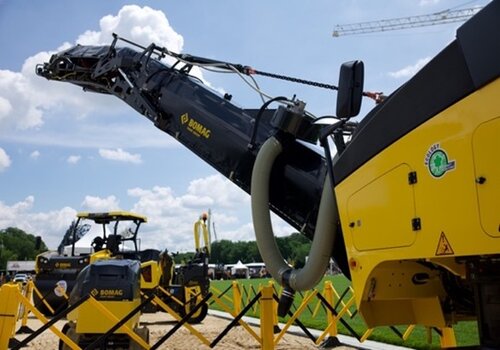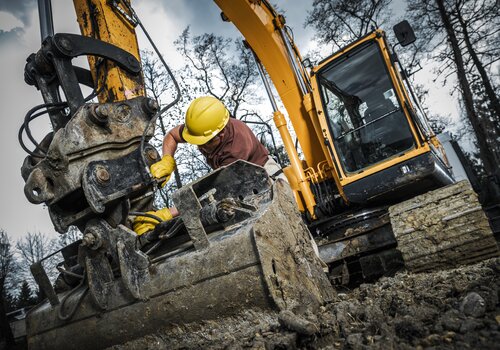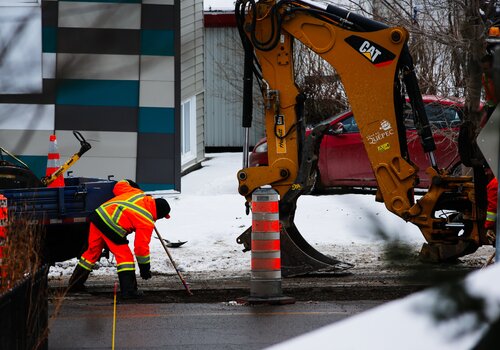Mobile elevating work platforms (MEWPs) seem to reach higher every year. Without MEWPs, contractors would have to use scaffolding, an elevator, or a truck-mounted boom lift—all of which have their own limitations.
Snorkel leads the market in maximum boom platform height with their 2100SJ, which has a platform height of 216 feet.
“We see plenty of opportunities for the Snorkel 2100SJ, and already have customer interest from a number of stadium projects that are under construction, as well as for maintenance activities in petrochemical facilities,” says Matthew Elvin, CEO, Snorkel.
A History of Reach
The company was founded in 1959 by Art Moore, who had developed an aerial work platform designed specifically for aerial firefighting and rescue work. Following success in that sector, Snorkel entered the construction and industrial market with its first telescopic boom lifts in 1977—the Snorkel TB-42 and TB-42P, each with a platform height of 42 feet.
However, before Snorkel entered the construction lift/access industry, JLG had already been a major supplier of boom lifts. In 1970, the company had introduced the world’s first self-propelled aerial work platform. Commonly referred to today as JLG 1, the innovative lift introduced by John L. Grove had a 27-foot platform height and remains on display at JLG’s McConnellsburg manufacturing plant.
In 1984, Genie entered the market with their first introduction—the Genie Z-30/20 boom lift. The company’s first ever boom lift has a maximum reach of 30 feet.
Challenges of Going Higher
Manufacturers must overcome certain engineering challenges in order to increase the maximum platform height of their boom reaches.
“The main engineering challenge with these larger booms is how to balance the requirements for safety and stability at these new heights, with suitable dimensions and machine weight that enable the lift to be carried on readily available means of transport,” says Elvin. “Additionally, we need to ensure simplicity in the design to ensure ease of operation and ease of maintenance.”
“Engineering challenges we overcome to manufacture high-reach boom lifts machines include meeting counterweight requirements, boom deflection when fully telescoped, stowed length for transport—envelope control (in what sequence and how do you control your boom sections) and wind impact on your boom,” says Jennifer Stiansen, Director of Marketing at JLG.
“When manufacturing the largest booms, consideration must be taken for the extreme lengths of the boom tubes, the large weight of the overall machine, as well as the power and hydraulic systems needed to ensure it gets the job done quickly once out in the field,” says Sean Larin, Genie Product Manager, Terex AWP.
More Than Reach
Other than reach, MEWP manufacturers have introduced many other innovations.
JLG, for example, has claimed many firsts in the lift industry over the past 51+ years, including oscillating axles for boom and scissor lifts in 1981, the only fuel-cell powered boom in 1999, SkyGuard technology in 2012 and the first true hybrid diesel/electric boom lift--the H340AJ—in 2014. More recently, JLG introduced the JLG 670SJ boom lift with self-leveling technology, AccessReady Fusion XR virtual reality training, an Augmented Reality App, and a mobile Battery Monitoring System.
Genie’s innovations include the Genie Lift Guard Fall Arrest Bar, which allows a user to exit the platform and work comfortably outside of the platform with a six-foot shock absorbing lanyard; a new Genie Lift Tools Access Deck, which provides operators with a secondary surface to work from that is 22 inches above the platform floor, Genie Lift Connect telematics technology, and Genie BIM (business information modeling) files so builders can include Genie MEWPs and telehandlers in their project BIM files.
The new Snorkel 2100SJ brings a number of innovations including the unique design of the patent-pending transformation mechanism that enables the axles to be extended while the lift is static and patent-pending secondary platform controls that are designed to enable the operator to face the work area while positioning the platform; this allows for safer operation and increased precision. The secondary control panel, which provides all machine functions other than drive, is located on the opposite side of the platform to the primary controls and can be ‘folded away’ into a stowed position when not in use to protect it from damage and to maximize the platform working area. Haptics in the upper controls provide the operator with a joystick vibration experience that becomes proportionally stronger to warn the operator as they near the boundaries of the envelope, to avoid sudden stops when working at height.
“As buildings continue to get larger and more complex in their design, contractors need equipment that can not only reach higher but also reach farther,” says Elvin. “With an industry-leading outreach of 100 feet and the largest working envelope in its class—5.48 million cubic feet—the Snorkel 2100SJ is taking the construction sector to new heights.”
Join over 40,000 industry peers who receive construction industry news and trends each week. Subscribe to CONEXPO-CON/AGG 365.












